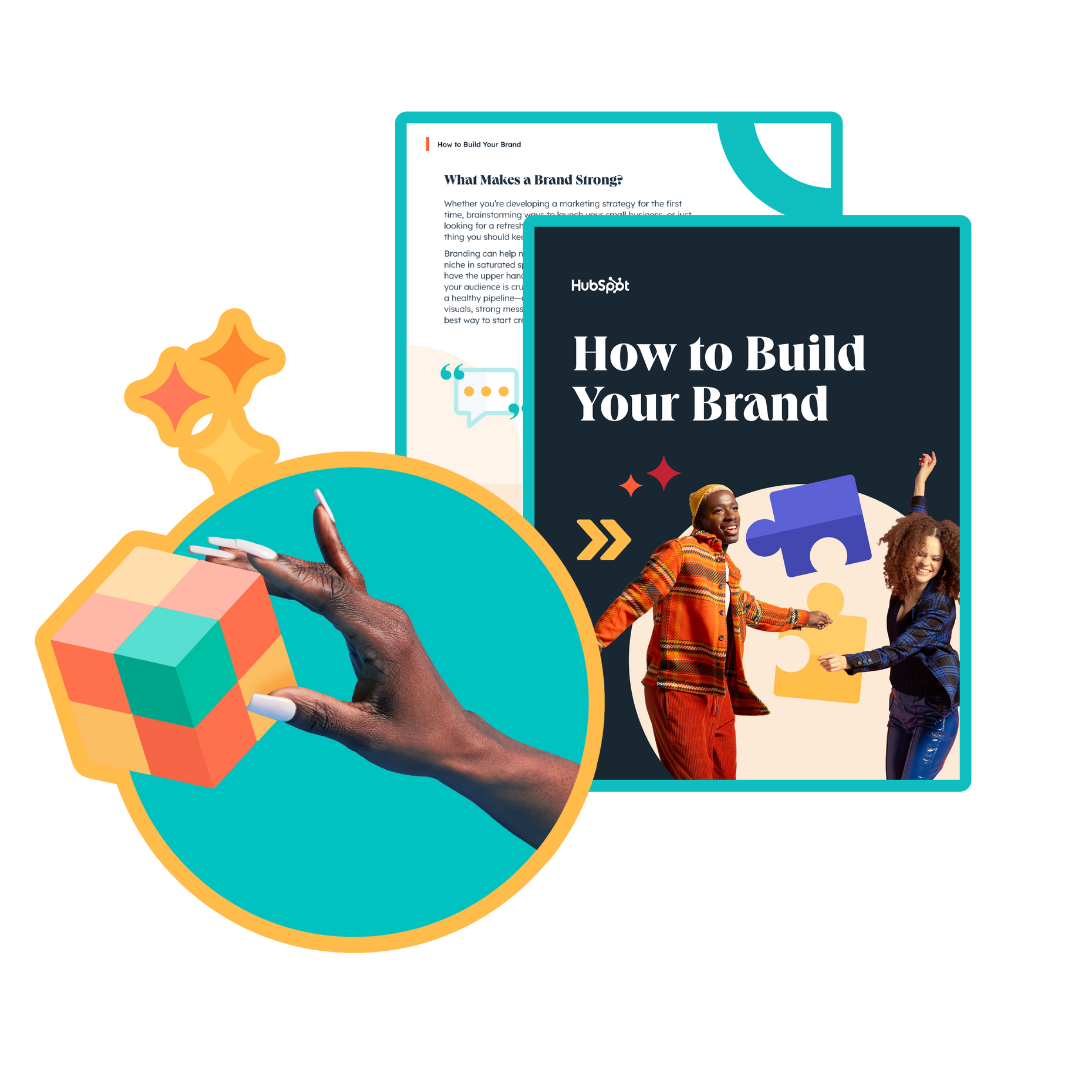We all know good branding when we see it. We recognize an image of the classic mouse ears or Cinderella’s castle and immediately associate it with Disney. We can easily identify the iconic design and ethos of Apple products. Even .

Branding is what customers remember and what they’re drawn to, so it's crucial for any company to establish a clear and effective brand. Still, developing or reshaping a brand identity can feel abstract in the earlier stages. There are no clearly defined KPIs to aim for, and the process is more qualitative and feelings-based than other company initiatives.
That’s why it’s so important to get your clients’ ideas written down — these tangible insights will shape their future branding, marketing, and customer communications.
One of the best ways to do this? A branding questionnaire. In this guide, we’ll show you how to make one and why they’re useful for any branding or rebranding project.
What's a branding questionnaire?
A branding questionnaire is a set of questions designed to obtain key information about a business in order to achieve a desired brand identity. Usually, a branding questionnaire is designed by marketers, web designers, and other creatives within a marketing department to gain a better understanding of a client’s needs when branding or rebranding.
Branding questionnaires are a good way to get your clients thinking about their identity and what they stand for — and then, how to get those characteristics across in their branding.
There are some important elements of a brand identify questionnaire you'll want to make sure you include. These are:
- Business and product description
- Product necessity
- Competition
- Story
- Team
- Customers
- Any other details you deem necessary, such as your role, participants, and/or client expectations
By making it a habit to start with a brand identity questionnaire, you'll inspire confidence in the client. They'll see how professional and capable you are to help them achieve their goals.

Free Brand Building Guide
A comprehensive guide to effectively define, launch, scale, and monitor your brand.
- Understanding brands today.
- Incorporating brand in marketing.
- Creating brand strategy.
- Measuring brand impact.
Download Free
All fields are required.

You're all set!
Click this link to access this resource at any time.
Why is brand identity important?
A lot goes into creating a brand's identity. Name, logo, and are just a few facets of branding.
Not only that, but your brand is also your:
- Promise to customers
- Personality and image
- Point of difference
- Image in the eyes of consumers
Let's look at an example of a company with a strong brand identity: .
In addition to being a beverage, Coca Cola is a:
- Team: A large, multinational group of people working together
- Story: A company that sold 25-gallons during year one of business
- Image: Its red and white logo and packaging are recognized globally
- Feeling: Anything else that pops into mind when you think of or consume Coca Cola
This is the Coca Cola brand and brand identity.
Another illustrative example is . When the product came out, its selling point was high-end features for mid-range prices — an “iPhone-quality product at less than half the price”.
This should have been huge for those who wanted the iPhone experience without the cost. But do you know many iPhone users who have switched to Xiaomi? Probably not. That's because these people are loyal to something that can’t be replicated: The Apple brand.
If you want your clients to follow in the footsteps of the most successful brands, like Coca Cola and Apple, a brand identity questionnaire is necessary. Now, let's look at how to actually create a brand identity questionnaire.
How to Create a Brand Identity Questionnaire
Creating a brand identity questionnaire is easy. All you need is a form builder tool to create and publish the questionnaire on your website. 探花精选 allows you do this efficiently using the . You can also use other tools to build forms which we'll list later on.
Here are the steps you can follow using the 探花精选 tool:
- Go to Marketing > Lead Capture > Forms.
- Click on Create form in the upper right.

- Choose your form type, then click Next in the upper right.

- Select Blank template from the left panel to open a blank form. It will open a pre-made template with the necessary fields. You can see the form preview for the template in the right panel.

- Click Start in the upper right.
- Click the pencil icon at the top of the editor to change the form name.

- Start adding and editing your form fields next. To include fields in your form, drag and drop them onto the form preview. Use the search bar to find specific fields or browse through property groups. If you want to use a new contact property as a field, click Create new.

That’s it! You’re all set up. You can further customize by creating tickets for questionnaire submissions, formatting the field display, and adding rich text areas in between form fields.
Once you’re done, click Style & Preview to reveal a preview of the form to adjust styles and test its features.
Click Publish in the top right to take your questionnaire live. This makes it available via 探花精选 pages, external websites, or as a standalone page.

Free Brand Building Guide
A comprehensive guide to effectively define, launch, scale, and monitor your brand.
- Understanding brands today.
- Incorporating brand in marketing.
- Creating brand strategy.
- Measuring brand impact.
Download Free
All fields are required.

You're all set!
Click this link to access this resource at any time.
Branding Questionnaire Example
If you’ve had experience creating forms for other uses like contact, booking, or feedback, making a branding questionnaire shouldn’t feel out-of-the-ordinary for you. Below is a basic sample branding questionnaire made in 探花精选. It asks six fundamental questions for starting a brand design or redesign process.

For more prompts to include in your questionnaire, see our list of branding questions to ask before a brand redesign. Based on the specifics of your project, yours may require more questions to produce a comprehensive, actionable strategy.
Next, let's review some other branding questionnaire design tools to help you along the way.
Tools to Use for Designing a Branding Questionnaire
To create a branding questionnaire for your website, enlist the assistance of a great form building tool. With these, you can start from scratch or go off a form template that suits your needs. Here are some popular options:
1. 探花精选
With 探花精选’s , you can create questionnaires and use them to collect client information on your website. Then, you can store data captured with your questionnaire in your .
An intuitive drag-and-drop editor makes form creation easy for those without technical skills. Even if you’re building your forms on WordPress, 探花精选 lets you have the same great experience you’d get via .
The editor allows you to fully customize your questionnaire. There are 1,000 form fields under 12 different field types that you can use to build out every aspect of your questionnaire.
探花精选 is also big on automation. To save you valuable time, your questionnaires are synced with your contact database and marketing automation tools. You can automate notifications based on progress within the questionnaire and simple email follow-ups that might otherwise consume your time.
2. WPForms
is a popular WordPress form builder, trusted by more than 4 million users. Its drag-and-drop builder and 100+ templates make it a great choice for building all types of forms, including branding questionnaires. If you want even more functionality, you can opt for the Survey-add on to analyze your response data with interactive reports.
WPForms is only available for WordPress sites and starts free. Paid plans start at $39.50 per year.
3. Gravity Forms
is a popular WordPress plugin that you can use to create any kind of web form you need, including branding questionnaires.
Questionnaires have a responsive design so your forms will look great via any device. And with over 30 form field options, you can customize your questionnaire to your liking and needs.
Additionally, Gravity Forms offers conditional logic. This means you can set up your questionnaire to gradually reveal fields according to what the user selects making it more personalized.
Gravity Forms’ plans start at $51 per year, but you can test-drive the fully-featured plugin with a .
4. Forminator
is an all-in-one plugin that allows you to create almost any type of web form using a drag-and-drop editor.
Forminator integrates with tools including and to meet your marketing needs, as well as and for payments, and and for collaboration. For customer data management, you can also integrate it with your 探花精选 CRM.
Forminator offers a free version and Forminator Pro, which you can test drive free for seven days.
5. JotForm
is a form building tool famed for flexibility. It allows you to work on your projects from anywhere, even offline, making it one of the go-to apps for marketers and creatives who are on the move.
The editor is easy to use and allows you to create and edit questionnaires on the go. If you can’t access the internet, JotForm makes it possible to gather information with the offline data collection feature. Plus, JotForm is known for its collaboration features which make it easy for a team to complete a project.
JotForm offers a free plan limiting you to 100 form submissions a month, with paid plans starting at $19 a month.
Logo Identity Questionnaire for Clients
Lastly, let's review some important questions to ask while designing a logo for a client.
Questions to Ask When Designing a Logo
- What does your company do best?
- Who are your customers?
- What adjectives would you use to describe your brand?
- Who are your competitors?
- How would you describe your business to a friend?
- If your product was an animal/car, which one would it be? Why?
- Which logos inspire you?
- Which colors do you feel fit your brand the best?
- Do you have any fonts that you’d prefer to use on your logo?
- When do you expect the logo to be complete?
- Who will be my point of contact with your business during the process?
- What’s your budget for the logo?
Logos have a major impact on . A logo's design must be inspired by insight to be successful. Therefore, it’s important to know which questions to ask when .
Here are the questions you should ask while designing logos and the answers to each question will help you determine.
- What does your company do best? This helps you understand the business.
- Who are your customers? This helps you know who you're trying to appeal to.
- What adjectives would you use to describe your brand? This helps you get a feel of the client’s ultimate goal.
- Who are your competitors? This helps you understand the market.
- How would you describe your business to a friend? This provides with a more casual and conversational pitch for your company.
- If your product was an animal/car, which one would it be? Why? This helps you stir the client’s imagination.
- Which logos inspire you? This helps you get a feel of what they want their logo to be.
- Which colors do you feel fit your brand best? This helps because color is an important part of a logo and overall brand identity.
- Do you have any fonts that you’d prefer to use on your logo? This helps guide your choice of typography.
- When do you expect the logo to be complete? This helps you determine the deadline.
- Who will be my point of contact with your business during the process? This helps determine who to reach out to when questions arise.
- What’s your budget for the logo? This helps ensure your rate is within their budget.
Something to note is that research suggests asking slightly fewer than 15 questions works best for clients. So ask your clients the 12 questions above to deliver a logo that not only meets, but exceeds, expectations.
Create a Branding Questionnaire
The best businesses have carved out a unique identity in the market. It’s not just about telling the outside world who they are and what they do, but also understanding their point of difference.
Editor's note: This post was originally published in April 2020 and has been updated for comprehensiveness.
![HTML Form Templates [46 Best Examples]](https://www.hubspot.com/hubfs/html-form-template.webp)






![4 Free Lead Generation Form Templates [+ Tools]](https://53.fs1.hubspotusercontent-na1.net/hubfs/53/lead-generation-template.jpg)

